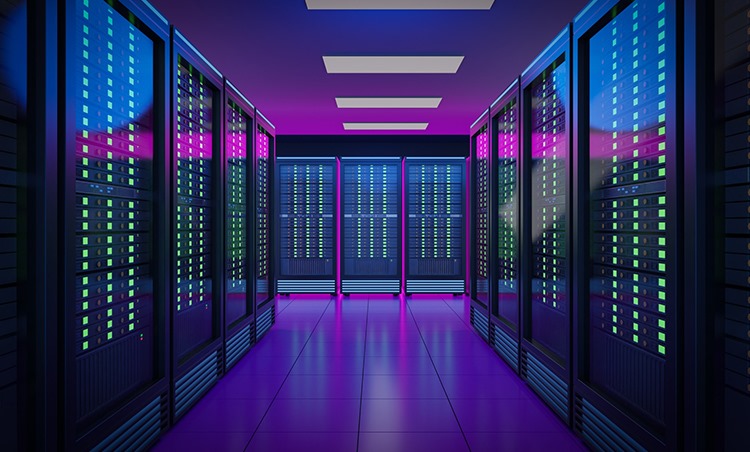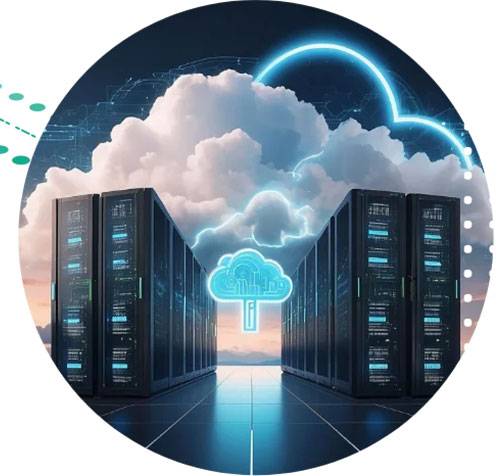Table of contents
Originally published in ETedge-insights.com
As of February 2025, India has 153 data centres, with operational capacity expected to rise to 2027 MW by the end of 2025. A rise in data usage, increased adoption of cloud computing, and extensive application of emerging technologies such as AI, IoT, and 5G, are some of the drivers behind this growth.
Increased internet penetration, the government’s efforts towards digitisation, digital transformation, and foreign investment, is making India one of the largest data center service markets globally. At the heart of this change are two players: Edge data centres and Hyperscale facilities.
Edge Data Centres in India
Edge data centres are data centres geographically closer to end users and devices. By pushing compute, storage, and connectivity near the end user, they assist organisations in speeding data processing rates and minimising transit time and latency, crucial for real-time processing.
Edge computing has gained importance due to India’s proactive drive for 5G and the increased utilisation of IoT devices in homes and offices, for which localised data processing is essential, enabling seamless device-to-device connectivity.
The requirement for improved cloud services and connectivity in Tier-2 and Tier-3 towns is another driving factor. Statistics show that the largest demand for Edge data centres is being driven by OTT players and e-commerce. As customers are spread across geographies, businesses are expected to provide consistency in operation and quality of service across all points.
Edge data centres are the preferred option in India due to the following reasons:
- They are extremely reliable
- They align with regulatory compliances
- Offer richer user experiences
- Minimise risk of failure through reliance on a single point
- Save bandwidth costs by processing data locally
- Reduce latency for application workloads requiring real time data processing, improving application performance.
Hyperscale Data centres: The Backbone of India’s Digital Economy
Unlike Edge cloud data centres, which are small and strategically placed near end devices, hyperscale data centers are enormous, centralised facilities optimised for efficiency and scalability.
Hyperscale data centres power cloud services, big data processing and AI workloads at scale. The hyperscale data centre market globally is expanding rapidly and projected to increase from $111.57 billion in 2023 to $177.58 billion by the year 2032.
Major Drivers for Hyperscale Data Centre Adoption
- Cloud Adoption: As more Indian companies move to the cloud, the demand for hyperscale infrastructure is increasing to support massive workloads.
- AI and Big Data: AI workloads and analytics need massive computing power and efficiency, which can be provided by hyperscalers efficiently.
- International Investment:As a growing destination for Hyperscalers, Global Capability Centers and an important transit for transoceanic data, India has become a focal point for investments in Data Centers by international technology companies; not counting the huge untapped digital transformation market locally.
- Qualified Workforce and Tech Knowledge: Presence of a qualified workforce with technology knowhow has further added to the development of the sector.
- Strategic Geographic Location: Proximity to developing markets of the Asia-Pacific, the Middle East, and Africa makes India an ideal location from which to serve these markets with low-latency connectivity.
Advantages of Hyperscale Data Centres
Because of their sheer scale and magnitude, hyperscale data centres offer several advantages that no other facility can provide. This includes:
- Unmatched scalability to adapt to changing enterprise requirements
- Centralised management for operational simplicity
- Energy efficiency and sustainability through innovations such as liquid cooling and the integration of renewable power
Compared To, Not Contrary To: Bridging the Gap
Edge and hyperscale data centres are not competing—rather, they complement each other to produce a more efficient and responsive data environment. Edge data centres are the first point for processing real-time data locally before passing on the information needed to hyperscale facilities for further analysis and long-term storage.
With proximity pre-processing closer to the Edge, Edge data centres minimise latency, optimise bandwidth, and ensure business-critical operations continue without interruption even when there is a loss of connectivity with the core data centre. Large-scale computing for training an AI model or analysing enormous databases for strategic business intelligence are carried out by hyperscale data centres.
Together, they support one another to form an effortless synergy. While Edge computing brings speed and responsiveness, Hyperscalers supply the power and scale required for Big data processing. Below are some examples on how this combination works across different industries:
- Retail: Edge centres facilitate local inventory management and faster e-commerce transactions, with Hyperscale centres processing backend analytics and demand forecasts.
- Healthcare: Telemedicine and real-time diagnostics are supported by Edge, while Hyperscale enables research, AI modelling, and data hubs.
The Indian Context: Why Both Edge and Hyperscale are Necessary: The hub and spoke model
India’s digital revolution is fuelled by enormous population, high internet penetration, and government-supported programs. Technologically, India has ample space for Hyperscale and Edge data centres. Here is how it is distributed across the country.
- Tier-1 Cities: Hyperscale centres reign supreme in Tier-1 cities, driving applications of national scale, cloud services, and enterprise workloads.
- Tier-2 and Tier-3 Cities: Edge centres are flourishing in small cities and rural locations, catering to low-latency applications, and extending digital services near users.
- Government Initiatives: Initiatives such as Digital India and Smart Cities Mission necessitate Hyperscale and Edge to cooperate, facilitating scalability and inclusiveness.
Sify’s Role in Edge and Hyperscale facilities in India
Sify continues to expand its hyperscale data center facilities with AI ready infrastructure in major metros Mumbai, Noida, Chennai, Hyderabad. These are all multi tower, scalable, hyperconnected campuses. By virtue of hypercalers being hosted in Sify data centers, it enables enterprises to adopt a seamless hybrid cloud environment with low latency access.
Special Economic Zones, IT resources, IT outsourcing companies are gradually moving to tier 2 cities. We need to build digital infrastructure for AI in these locations. AI training needs more investments, that can happen in the large metros, AI inferencing is cost effective which you can build in tier 2 cities.
Standardized design, existing network operations in 60 POPs, streamlined supply chain system, presence in all major cities, and diverse team structure allows Sify to deliver multiple EDGE Data Centers at the same time.
Conclusion
In the Indian context, Hyperscale data centres and Edge data centres are complementary pillars of digital infrastructure. With the expanding cloud ecosystem of India, Hyperscale data centres will keep fuelling mass-scale computing, AI, and cloud workloads, and Edge data centres will facilitate real-time processing and localised services.
Disclaimer: The views expressed in this article are those of the author/authors and do not necessarily reflect the views of ET Edge Insights, its management, or its members
Originally published in ETedge-insights.com































































